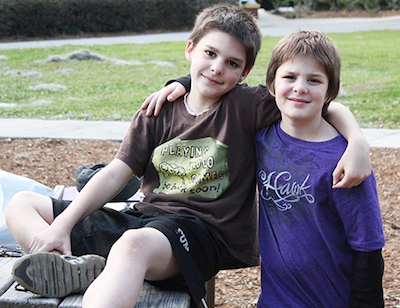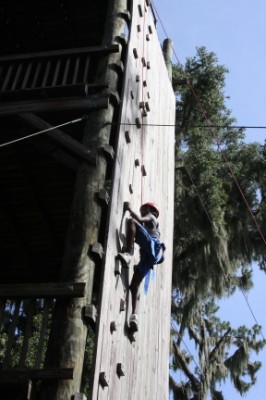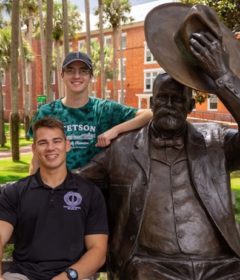Children’s home project impacts MBA students
Reaching out was about more than a good grade. It was about helping children.
 Probably no one expects a heart-warming experience from an M.B.A. class assignment. It’s not a common reason to take Organizational Theory and Behavior 519 taught by William Andrews, Ph.D., associate professor of management and chair of the International Business department.
Probably no one expects a heart-warming experience from an M.B.A. class assignment. It’s not a common reason to take Organizational Theory and Behavior 519 taught by William Andrews, Ph.D., associate professor of management and chair of the International Business department.
But it happened to Dana VonBrocken. And Brent Pafford, too, and Kirsten Shippert and other classmates who consulted this fall for Florida United Methodist Children’s Home in Enterprise, Fla.
The class project was a high-octane mix of learning and community service to produce a valuable management tool for the historic nonprofit. But it also gave students a close, personal glimpse into the lives of abused and neglected children and the faith-driven people whose humanitarian mission is to make their lives better.
“It was a world a lot of us had never seen,” said Shippert.
“We were exposed to very personal stories and truly passionate and incredible individuals,” said VonBrocken.
“It was nearly impossible to emotionally detach and perform my role from a purely analytical standpoint,” said Pafford.
In greater and lesser degrees, however, students kept emotions at bay while performing professional-grade work that garnered praise from Andrews and from Becky Dotson, president and CEO at the Children’s Home. The home began as an orphanage in 1905 and provides a range of care for an average of 400 children and teenagers a month.
Students’ findings were right on target, said Dotson, who was hired in May.

“Their work is incredibly helpful to me as the new CEO,” she said. “They did an exceptional job capturing the correct information that brought about solutions to several concerns relative to high employee turnover.”
Students began work Oct. 14, said Jillian Ragia, chosen by the class to coordinate the project. Strategies were decided. Teams were formed. Tasks assigned, and interviews conducted with former residents, administrators, house parents and others. Mentored by Andrews, students identified core themes, drew solid conclusions and wrote nine convincing recommendations.
The entire class delivered its collaborative qualitative analysis report to the client’s top management.
“We were able to synthesize, support, and present some very compelling recommendations,” said Andrews who offered the services of his class when he was contacted last summer by Children’s Home management.
“We were definitely taking a risk proposing some of our ideas,” said Ragia, a health care data analyst, “but they were satisfied with everything we brought forth, the good and the bad.”
The fast and focused consult increased students’ expertise in management analysis, but they say they also learned broader career skills during the “real life work,” as Ragia termed it. She learned to delegate, a new experience for her, and also to be more patient and trust in teamwork.
“We learned a lot about how to approach sensitive topics with utmost tact, and how to connect with strangers and gain their trust,” said Shippert.
The analysis is valuable for the home’s leadership team, said Dotson, who complimented the class, Andrews and Stetson for its community service. She said she hoped students found meaning in the “up close and personal view of the lives of children of abuse and neglect.”
She needn’t worry.
“I personally experienced a reality check,” said Pafford, a piano teacher and accompanist who hopes for a career in music/arts administration. “Our desire was not just to receive a good grade, but to help this organization change the lives of kids in very dire circumstances,”
“I never thought anything I did in my M.B.A. would stand to benefit anyone besides myself, let alone actually serve the greater community,” said Shippert, who teaches piano, directs a church choir and is on track for a career in opera performance.
“At its core, it was a consulting project,” said Von Brocken, a part-time Disney worker who’s eying a career in film and theater production. But as they talked with what Shippert calls “very inspired, mission-driven” people about life and work at the home, their hearts were touched. The personal interaction, said VonBrocken, “drove our genuine desire to do what we could to help.”
“It’s not something I will soon forget,” she said.
by Ronald Williamson



